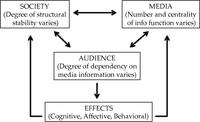
Photo from wikipedia
Mapping and valuing of forest recreation is time-consuming and complex, hampering its inclusion in forest management plans and hence the achievement of a fully sustainable forest management. In this study,… Click to show full abstract
Mapping and valuing of forest recreation is time-consuming and complex, hampering its inclusion in forest management plans and hence the achievement of a fully sustainable forest management. In this study, we explore the potential of crowdsourced social media data in tackling the mapping and valuing of forest recreation demand. To do so, we assess the relationships between crowdsourced social media data, acquired from over 350,000 Flickr geotagged pictures, and demand for forest recreation in British Columbia (BC) forests. We first identify temporal and spatial trends of forest recreation demand, as well as the countries of origin of BC forests visitors. Second, we estimate the average number of annual recreational visits with a linear regression model calibrated with empirically collected secondary data. Lastly, we estimate recreational values by deriving the average consumer surpluses for the visitors of BC forested provincial parks. We find that annually, on average, over 44 million recreational experiences are completed in BC forests, with peaks during the summer months and during the weekends. Moreover, a crowdsourced travel cost approach allowed us to value the recreational ecosystem service in five forested provincial parks ranging from ~2.9 to ~35.0 million CAN$/year. Our findings demonstrate that social media data can be used to characterize, quantify and map the demand for forest recreation (especially in peri-urban forests), representing a useful tool for the inclusion of recreational values in forest management. Finally, we address the limitations of crowdsourced social media data in the study of forest recreation and the future perspectives of this rapidly growing research field.
Journal Title: PLoS ONE
Year Published: 2022
Link to full text (if available)
Share on Social Media: Sign Up to like & get
recommendations!